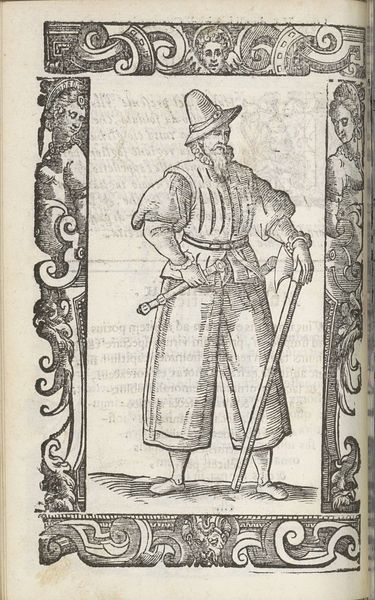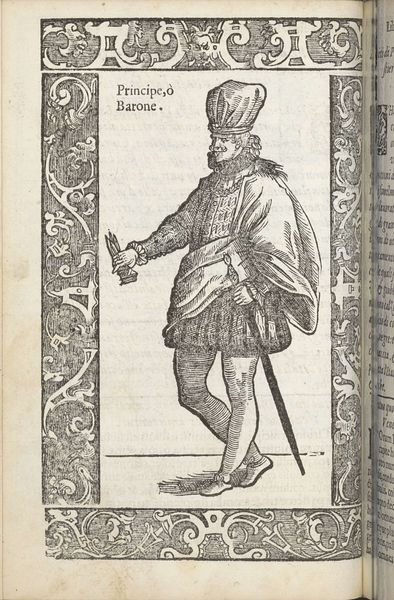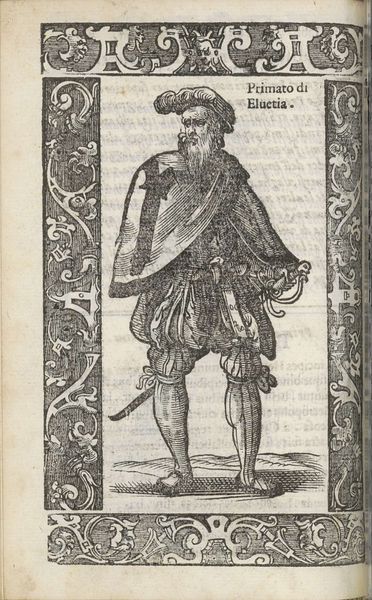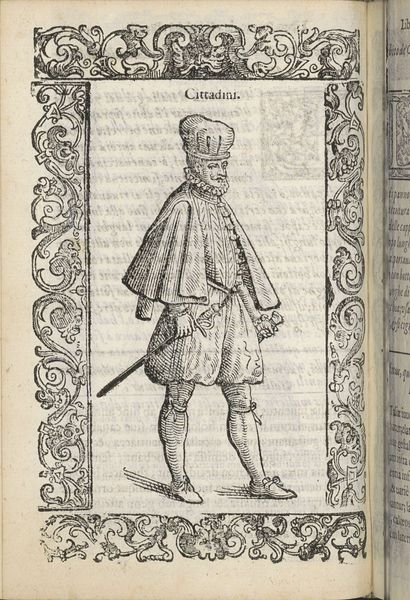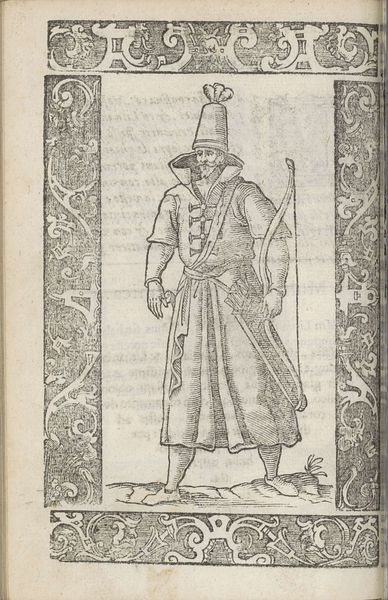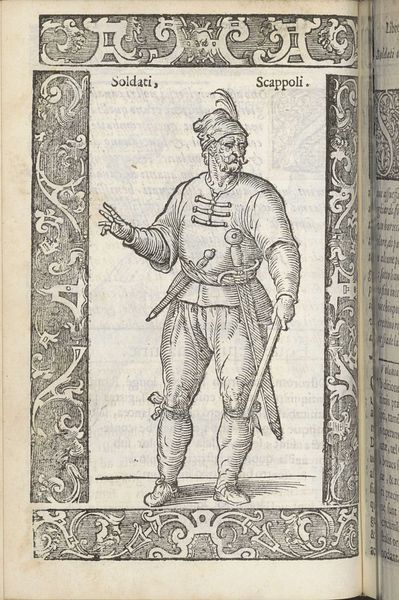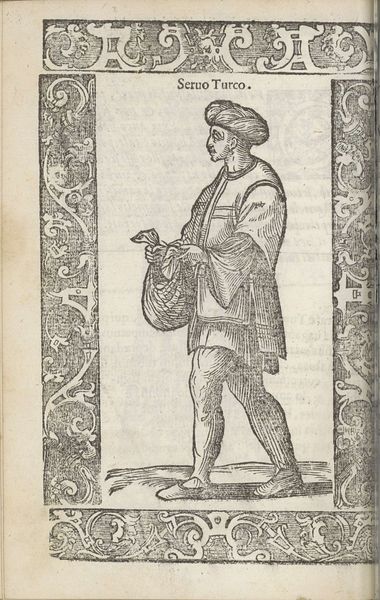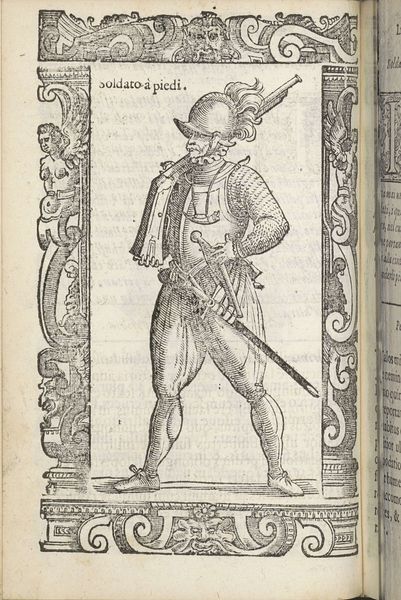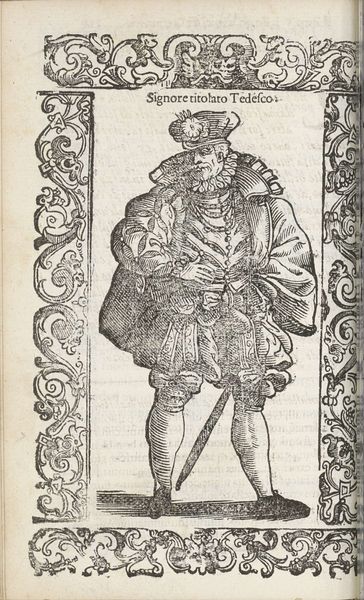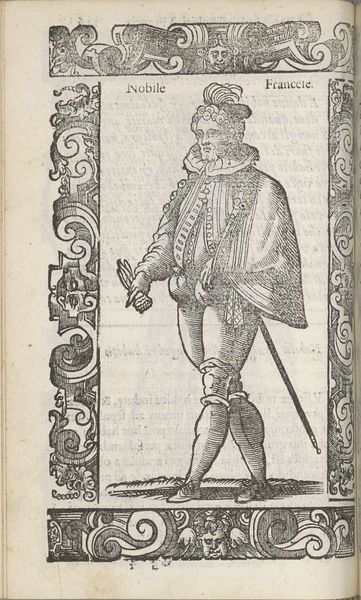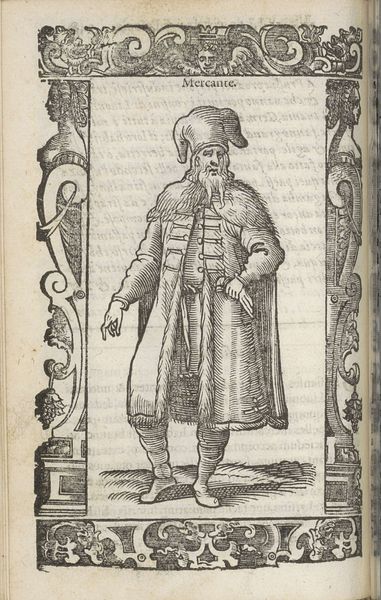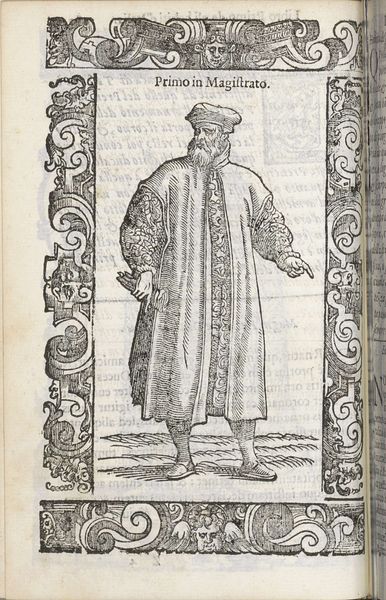
print, engraving
#
portrait
# print
#
figuration
#
history-painting
#
italian-renaissance
#
engraving
Dimensions: height 167 mm, width 125 mm
Copyright: Rijks Museum: Open Domain
Editor: Here we have "Soldato in guarnigione," or "Garrison Soldier," a print by Christoph Krieger, dating back to 1598. It looks like an engraving. The figure seems both sturdy and decorative with that elaborate frame. What strikes you about this piece? Curator: Primarily, I’m drawn to the interplay of lines. Notice the rigorous hatching technique Krieger employs to define form and texture. Observe how the density of the lines creates shadow and volume, particularly in the soldier's sleeves and breeches, thus creating the overall shape. Editor: Yes, the hatching really gives a sense of depth, and that pattern on his breeches adds a sense of liveliness. Is there any hierarchy to how forms and shapes take up the overall image space? Curator: Most certainly. The soldier's pose and equipment act as counterpoints that determine both spatial composition and rhythm of linear elements, achieving compositional equilibrium. Furthermore, do not neglect the patterned borders, which simultaneously contrast with and mirror elements of the internal figuration through mirroring of curved vs. angular forms, the floral vs. armored motif, and the decorative nature of both spaces. Editor: That's fascinating! So, in looking at the whole design—its structural and textural components—you derive meaning without considering social context? Curator: While not wholly disregarding historical context, meaning is fundamentally located within the aesthetic construction of the piece itself. The artist’s chosen arrangement, line, and material come together in such a way that produces aesthetic interest and evokes emotion and beauty from the viewer. Editor: I now see how examining the form helps decode the artwork’s deeper layers of composition. Curator: Exactly. Approaching art from this perspective, focusing solely on internal aspects and elements, unlocks its intended form.
Comments
No comments
Be the first to comment and join the conversation on the ultimate creative platform.

